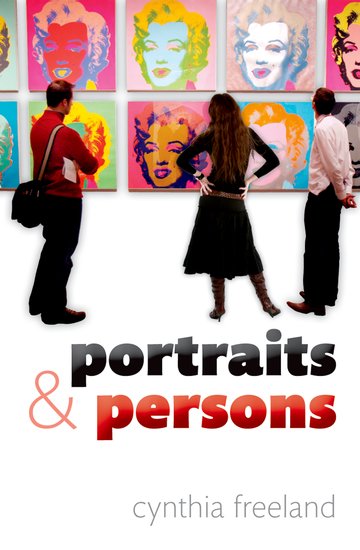By Cynthia Freeland
Art museums are not churches, but sometimes it feels as if you should behave with equal decorum inside. They seem meant to inspire reverence with their cool interiors and marble staircases. The guards eye visitors like the suspicious librarians of my childhood who always hissed “Whisper!” to noisy school groups. I once was glared at by another visitor when I burst out laughing in the Tate Modern Museum at Andy Warhol’s silver Elvis with guns. The combination of the Southern crooner posing as a macho gun-slinging cowboy with Warhol’s glitzy treatment was just too funny. I wanted to tell that woman she was missing the joke.
Last week I had another giggle in our Museum of Fine Arts in Houston while visiting an exhibit on tour from Buenos Aires’ Museo de Arte Latinoamericano. Most of these fabulous works from the Eduardo F. Constantini Foundation collection are being seen outside of Latin America for the first time. The painting that tickled my fancy was by Colombian artist Fernando Botero. Botero’s folk-art style renderings of chubby people seem generally whimsical and charming, and this large painting featured an especially ridiculous-looking dog with a fat child sitting on its back.

Humor is a legitimate topic for art, but one we don’t acknowledge often enough. Think of work of the Dadaists such as Duchamp’s famous Mona Lisa with a moustache. There is a wonderful book by James Elkins titled Pictures & Tears: A History of People Who Have Cried in Front of Paintings (Routledge, 2001). But it seems that humor in art is less discussed than pain and sorrow. Even if a work is serious, like the Botero painting, it can incorporate elements of poignant humor in style or expression. In literature and film we often find something called “black humor.” It exists in visual art as well. Think of the scathing portrayals of Weimar German fat-cats, bankers or card players, by artists like Otto Dix (as in, for example, his Skat Players).

Sometimes the humor in an art museum derives more from features of location and installation than from the art itself. I once saw a hungry kitten looking for food which had wandered into the open front door of Turkey’s Archaeological Museum in Istanbul. It looked so innocent and tiny juxtaposed to the looming archaic god figure visible just inside the entry. And I couldn’t help but laugh when entering a room full of Roman heads in Cophenhagen’s Glyptotek Museum. It’s not that classical busts are amusing in themselves, but there were so many mounted here, all at eye level, all looking at me. I felt I had arrived unexpectedly at a party where everyone was demanding to know whether I had really been invited.
Sometimes an artist inspires laughter through sheer imaginative excess and exuberance. One would have to be an utter curmudgeon to resist the charm and dazzle of the almost literally eye-popping wallpaper created by Takashi Murakami for an installation at MOCA in Los Angeles a few years ago. The gallery overflowed with fields of zippy flowers, plastic daisies, shiny dolls, smiling suns, and squeaky videos; it all seemed sublimely silly.
With Murakami I may be edging close to something that I don’t mean to recommend here, laughing at art in the sense of finding it ridiculous. Even great artists can have their foibles, but it’s as unkind to smirk over these as to feel smug about our friends’ limitations. What I have in mind is laughing with artists and not at them. When an artist shows a generous spirit and tries to entertain as well as challenge us, I think it’s the right thing to respond in kind.
Cynthia Freeland is professor and chair of the Department of Philosophy at the University of Houston. She is author of Portraits and Persons, Art Theory (VSI), and But Is It Art?, all published by Oxford. An avid amateur photographer, she has collected and displays numerous photographs of her favorite subjects on Flickr, including cats, food, and art museums she has visited.
Subscribe to the OUPblog via email or RSS.
Subscribe to only art and architecture articles on the OUPblog via email or RSS.
View more about this book on the ![]()
![]()


[…] Although I’ve titled this post “Five GIFers for the serious-minded,” it’s important to recognize the flexibility and importance of humor. Our UK Word of the Year originated on a satirical British television show. Wit, invention, and genius are not restricted to so-called worthy endeavors. And it’s okay to laugh in an art museum. […]